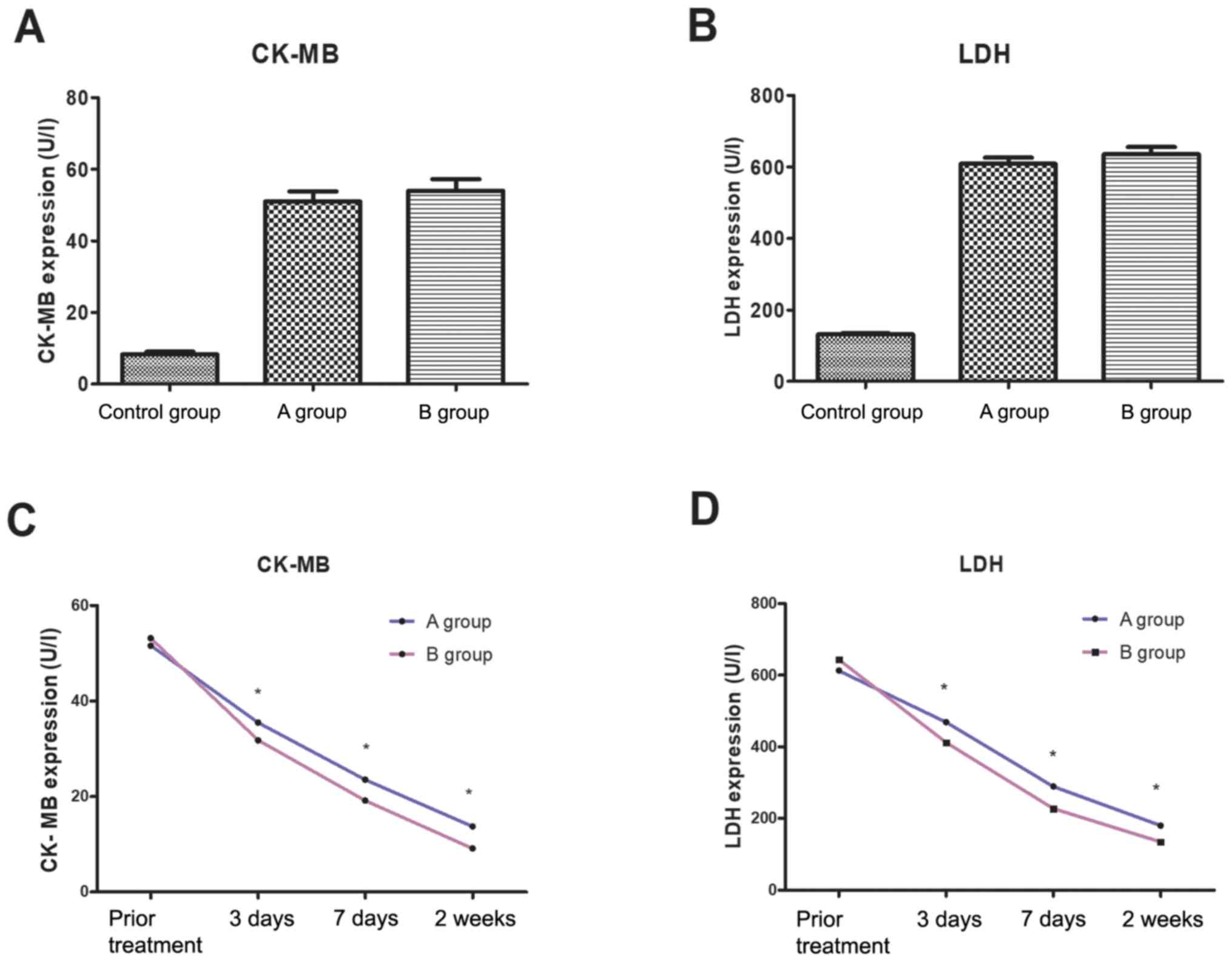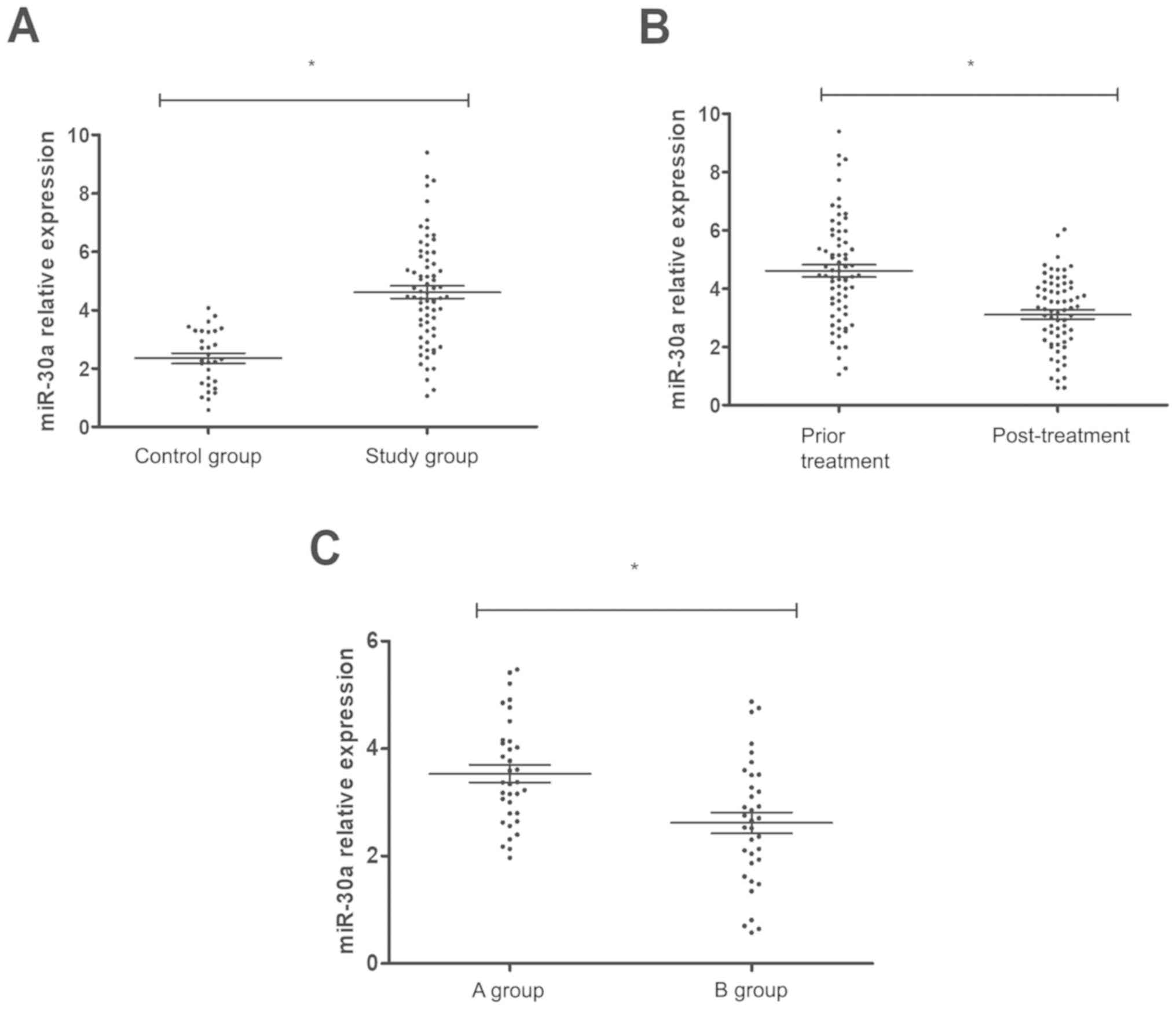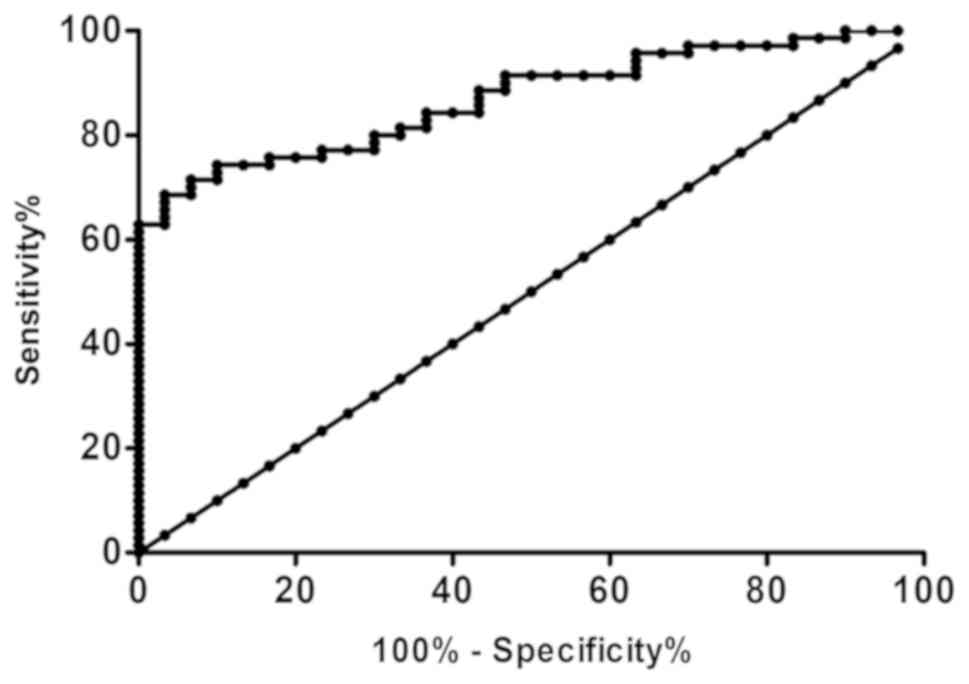|
1
|
Xiang W, Xue H, Wang B, Li Y, Zhang J,
Jiang C, Liang F, Pang J and Yu L: Combined application of
dexamethasone and hyperbaric oxygen therapy yields better efficacy
for patients with delayed encephalopathy after acute carbon
monoxide poisoning. Drug Des Devel Ther. 11:513–519.
2017.PubMed/NCBI View Article : Google Scholar
|
|
2
|
Rose JJ, Wang L, Xu Q, McTiernan CF, Shiva
S, Tejero J and Gladwin MT: Carbon monoxide poisoning:
Pathogenesis, management, and future directions of therapy. Am J
Respir Crit Care Med. 195:596–606. 2017.PubMed/NCBI View Article : Google Scholar
|
|
3
|
Oh S and Choi SC: Acute carbon monoxide
poisoning and delayed neurological sequelae: A potential
neuroprotection bundle therapy. Neural Regen Res. 10:36–38.
2015.PubMed/NCBI View Article : Google Scholar
|
|
4
|
Lee FY, Chen WK, Lin CL and Kao CH: Carbon
monoxide poisoning and subsequent cardiovascular disease risk: A
nationwide population-based cohort study. Medicine (Baltimore).
94(e624)2015.PubMed/NCBI View Article : Google Scholar
|
|
5
|
Clardy PF, Manaker S and Perry H: Carbon
monoxide poisoning. UpToDate 2018. https://www.uptodate.com/contents/carbon-monoxide-poisoning.
|
|
6
|
Huang CC, Ho CH, Chen YC, Lin HJ, Hsu CC,
Wang JJ, Su SB and Guo HR: Hyperbaric oxygen therapy is associated
with lower short- and long-term mortality in patients with carbon
monoxide poisoning. Chest. 152:943–953. 2017.PubMed/NCBI View Article : Google Scholar
|
|
7
|
Eichhorn L, Thudium M and Jüttner B: The
diagnosis and treatment of carbon monoxide poisoning. Dtsch Arztebl
Int. 115:863–870. 2018.PubMed/NCBI View Article : Google Scholar
|
|
8
|
Simonsen C, Magnusdottir SO, Andreasen JJ,
Rohde MC and Kjærgaard B: ECMO improves survival following
cardiogenic shock due to carbon monoxide poisoning - an
experimental porcine model. Scand J Trauma Resusc Emerg Med.
26(103)2018.PubMed/NCBI View Article : Google Scholar
|
|
9
|
Yang Y, Li Y, Chen X, Cheng X, Liao Y and
Yu X: Exosomal transfer of miR-30a between cardiomyocytes regulates
autophagy after hypoxia. J Mol Med (Berl). 94:711–724.
2016.PubMed/NCBI View Article : Google Scholar
|
|
10
|
Lin MS, Lin CC, Yang CC, Weng SC, Wang SM,
Chen CY, Huang N and Chou YH: Myocardial injury was associated with
neurological sequelae of acute carbon monoxide poisoning in Taiwan.
J Chin Med Assoc. 81:682–690. 2018.PubMed/NCBI View Article : Google Scholar
|
|
11
|
Lin CH, Su WH, Chen YC, Feng PH, Shen WC,
Ong JR, Wu MY and Wong CS: Treatment with normobaric or hyperbaric
oxygen and its effect on neuropsychometric dysfunction after carbon
monoxide poisoning: A systematic review and meta-analysis of
randomized controlled trials. Medicine (Baltimore).
97(e12456)2018.PubMed/NCBI View Article : Google Scholar
|
|
12
|
Gozubuyuk AA, Dag H, Kaçar A, Karakurt Y
and Arica V: Epidemiology, pathophysiology, clinical evaluation,
and treatment of carbon monoxide poisoning in child, infant, and
fetus. North Clin Istanb. 4:100–107. 2017.PubMed/NCBI View Article : Google Scholar
|
|
13
|
Garg J, Krishnamoorthy P, Palaniswamy C,
Khera S, Ahmad H, Jain D, Aronow WS and Frishman WH: Cardiovascular
abnormalities in carbon monoxide poisoning. Am J Ther.
25:e339–e348. 2018.PubMed/NCBI View Article : Google Scholar
|
|
14
|
Maghamiour N and Safaie N: High creatine
kinase (CK)-MB and lactate dehydrogenase in the absence of
myocardial injury or infarction: A case report. J Cardiovasc Thorac
Res. 6:69–70. 2014.PubMed/NCBI View Article : Google Scholar
|
|
15
|
Huang J, Huang C, Luo Y, Liu S and Chen X:
Role of miR-30a in cardiomyocyte autophagy induced by angiotensin
II. J Renin Angiotensin Aldosterone Syst. 16:1–5. 2015.PubMed/NCBI View Article : Google Scholar
|
|
16
|
Wang Y, Huang Y, Zhang M, Zhang X, Tang X
and Kang Y: Bioinformatic analysis of the possible regulative
network of miR-30a/e in cardiomyocytes 2 days post myocardial
infarction. Acta Cardiol Sin. 34:175–188. 2018.PubMed/NCBI View Article : Google Scholar
|
|
17
|
Casillas S, Galindo A, Camarillo-Reyes LA,
Varon J and Surani SR: Effectiveness of hyperbaric oxygenation
versus normobaric oxygenation therapy in carbon monoxide poisoning:
A systematic review. Cureus. 11(e5916)2019.PubMed/NCBI View Article : Google Scholar
|
|
18
|
Nakajima M, Aso S, Matsui H, Fushimi K and
Yasunaga H: Hyperbaric oxygen therapy and mortality from carbon
monoxide poisoning: A nationwide observational study. Am J Emerg
Med S0735-6757(19)30087-7, 2019.
|
|
19
|
Rabie AA, Asiri A, Alsherbiny M, Alqassem
W, Rajab M, Mohamed S, I Alenazi WH and Ariplackal L: Management of
carbon monoxide poisoning-induced cardiac failure and multiorgan
dysfunction with combined respiratory and circulatory
extracorporeal membrane oxygenation. Saudi Crit Care J.
3(12)2019.
|
|
20
|
Fan E, Gattinoni L, Combes A, Schmidt M,
Peek G, Brodie D, Muller T, Morelli A, Ranieri VM, Pesenti A, et
al: Venovenous extracorporeal membrane oxygenation for acute
respiratory failure: A clinical review from an international group
of experts. Intensive Care Med. 42:712–724. 2016.PubMed/NCBI View Article : Google Scholar
|
|
21
|
Choi JH, Kim SW, Kim YU, Kim SY, Kim KS,
Joo SJ and Lee JS: Application of veno-arterial-venous
extracorporeal membrane oxygenation in differential hypoxia.
Multidiscip Respir Med. 9(55)2014.PubMed/NCBI View Article : Google Scholar
|

















